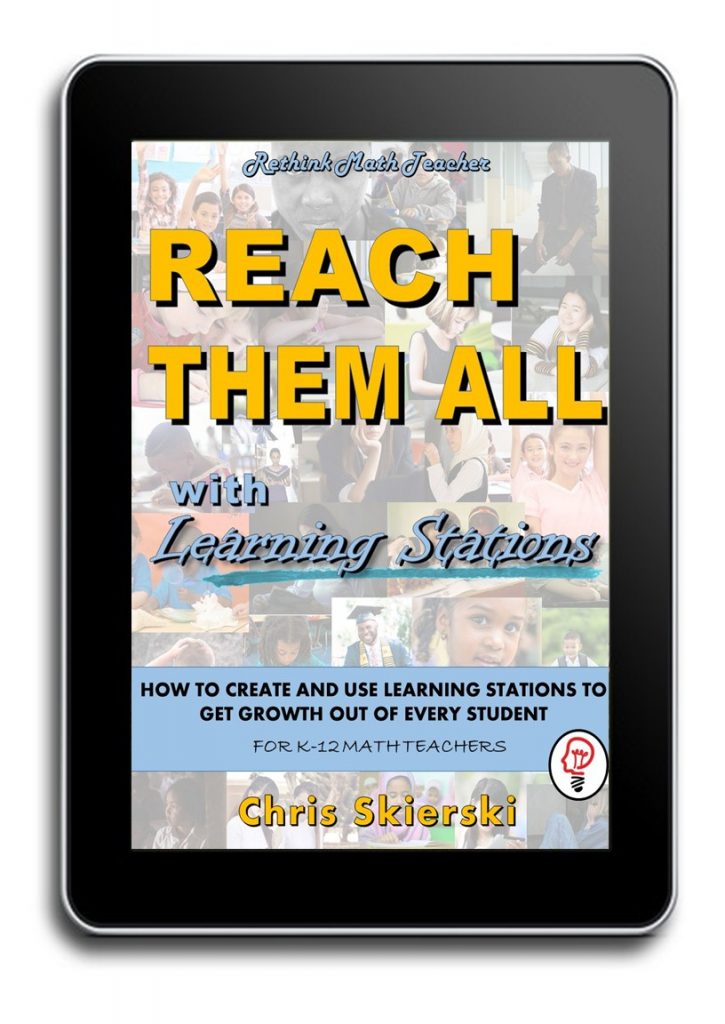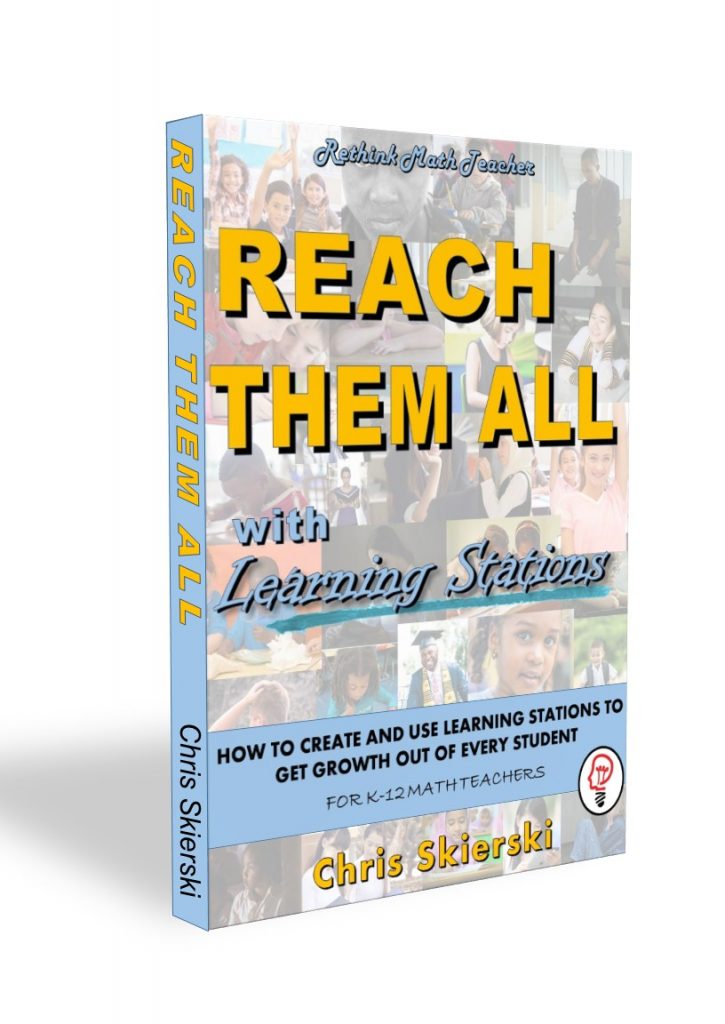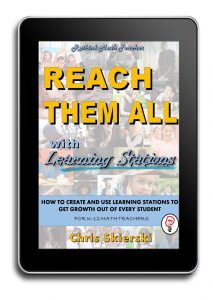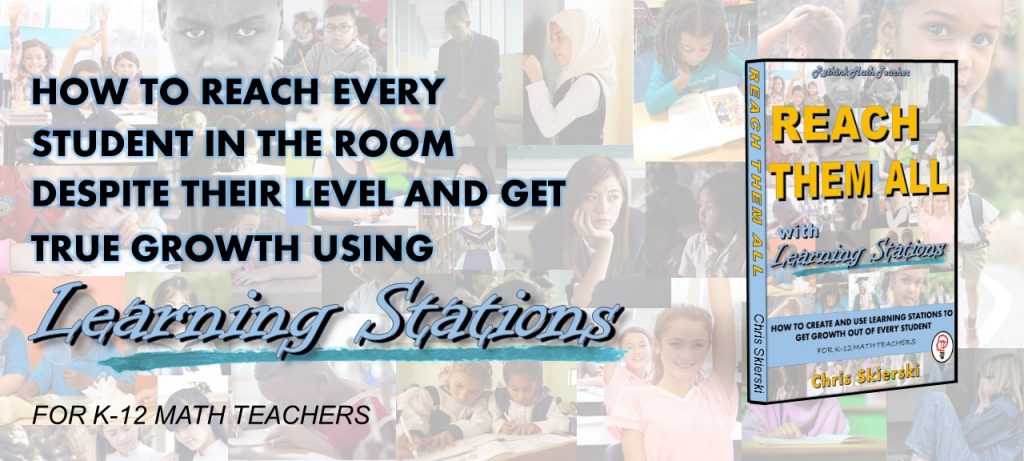
Order by Clicking Here:
Soft Cover on Amazon
eBook on TpT
Kindle
Imagine what your class would feel like if you were able to reach each student, and help them grow despite their abilities or needs.
What would your day feel like if every student was growing and making progress?
In this book I will explain what a skills based learning station is and how it will allow you to differentiate your instruction so that you can reach every student in the room, regardless of their level, and get measurable growth from each one.
Why it’s Frustrating
You teach your class a skill, but several students don’t get it because they can’t perform a skill they were supposed to learn in previous grades. Some need more time and practice to fully get it, and some have got it and are ready to move on.
How can you reach each student so that they can grow?
And what will happen if you can’t impact each student? How will they stay engaged? Show growth? Be successful?
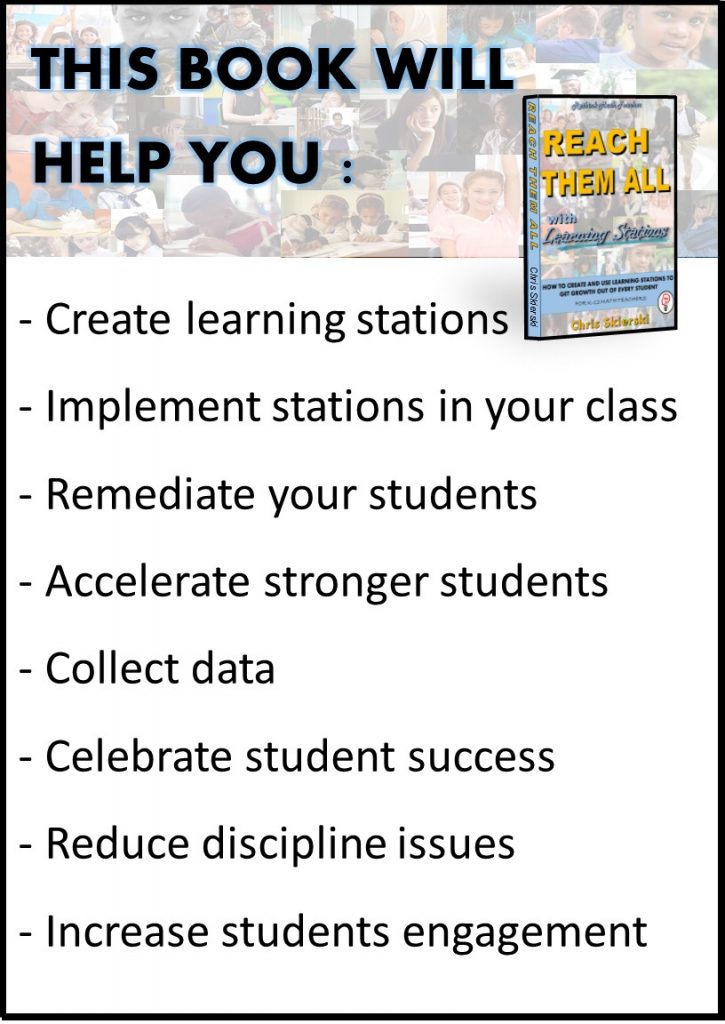
Learn how to use learning stations in your classroom so that you can reach your lowest students, and get gains out of them, while accelerating your strongest students at the same time.
This teaching strategy will allow you to remediate a student so that they are penalized for making mistakes and you can give them as much time as they need to find success without slowing down other students in the room or holding them back.
Plus, engaged students are less likely to misbehave. And since you are reaching them at their level, not giving them more or less than they can handle, they are more likely to not get frustrated and give up.
Avalaible on:
No student is left behind, all students are allowed to grow to their fullest potential.
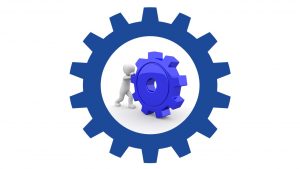
How do you help all of your students, when they all have different struggles? How do you remediate some while accelerating others?
Consider what’s involved in the following math problems:
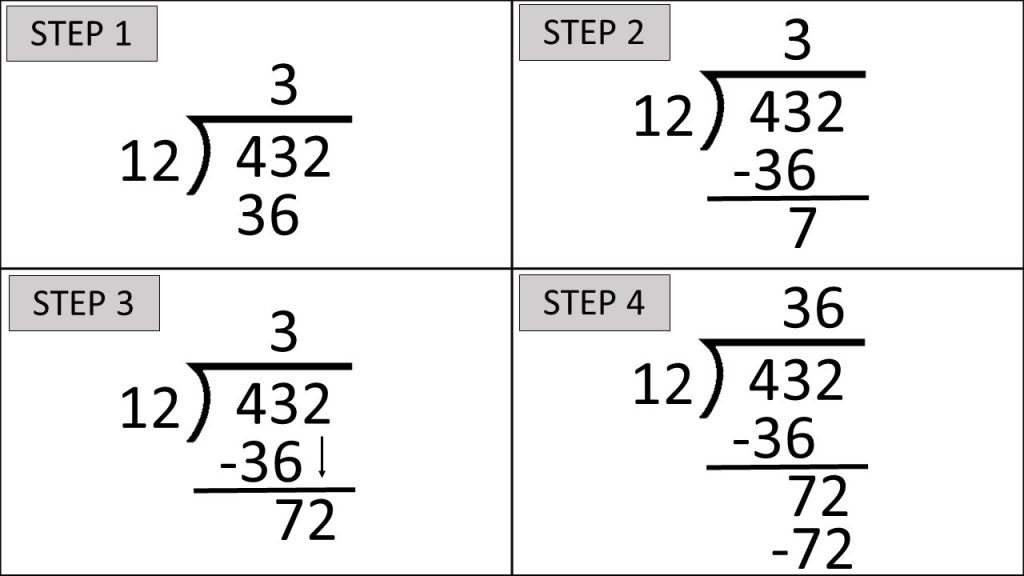
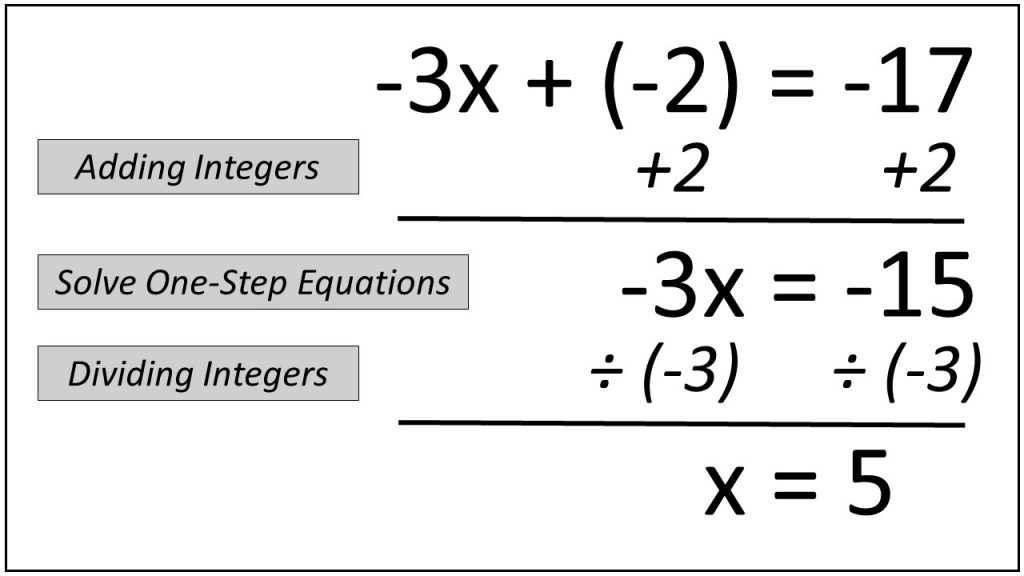
Some students can’t do step 1, others can’t do step 2, and others just need more practice than most.
How can you reach each student so that they can master the standard?
How can you remediate your weaker students, while accelerating your stronger ones?
The answer is to differentiate your instruction so that you target each student’s need. In this book, I will walk you through the process of setting up your own learning stations so that each student can become prodicient at the skill they need to learn to be able to do the grade level work. As students show mastery, they are progressed to the next skill, and then the next until they are on grade level.
Meanwhile. you have the freedom to accelerate your stronger students without forcing your weaker ones to move on until they’re ready.
This Book will show you how to remediate your students even though different ones are struggling with different steps of the same problem.
No students will be left behind
No students will be forced to remain on a subject, even though they’re ready to move on but their peers aren’t
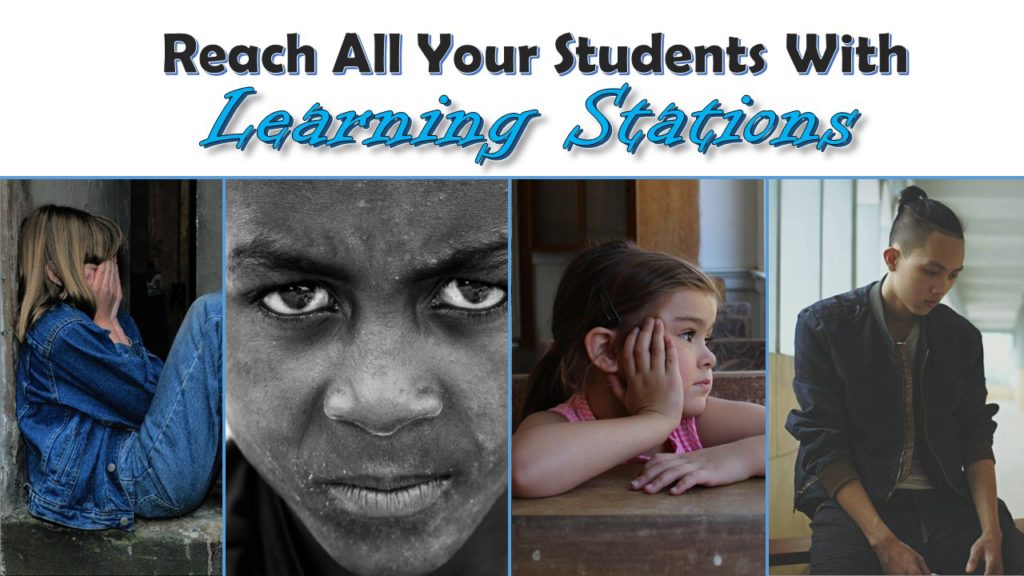
Reach Them All will teach you why Learning Stations are so powerful, and guide you through the step by step process to create them in your class. Best tips and practices are also shared, as well as how to implement them in your classroom with success.
No matter what your student is struggling with, you can reach them with learning stations.
Learning stations will help you plug the holes in any student’s math repertoire, accelerating your stronger students while remediating your weaker ones, and give each student the sufficient practice and time that they need to master each skill presented in class.
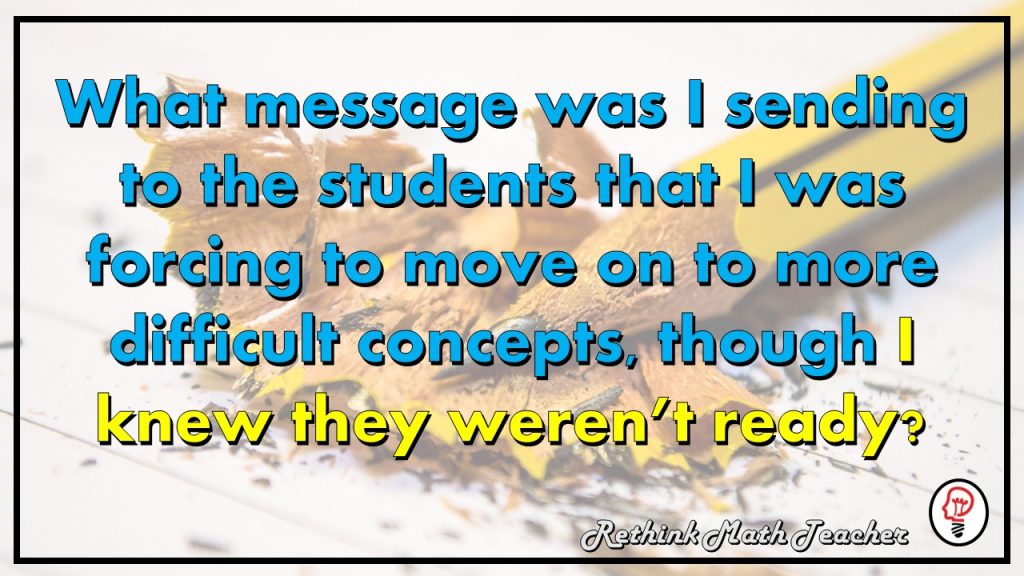
When students are met at their level, challenged appropriately, and are able to see their success, they are more engaged and less likely to be a discipline issue.
Imagine that I’m trying to teach a child to ride a bike. So I begin by having her practice with training wheels. I explain and model how to ride a bike, and then give her some practice.
After three days of this teaching and practice, I give her a test, which reveals that this young child still could not balance well, constantly fell down on left turns (despite the training wheels), and had not mastered the skill of coming to a complete stop!
So I label her with a D, remove the training wheels, and begin teaching her how to ride a bike!
This would not make sense! Of course I would reteach her, try to help her correct these mistakes, and help her master each skill before progressing her to riding a bike with no training wheels! Because without these skills that I was trying to teach her with the training wheels, she will not be successful at riding a bike without them!
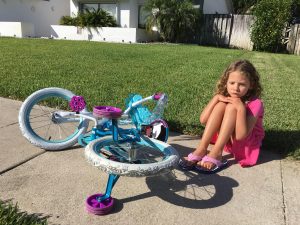
Sadly, this is what’s happening in our math classes. We teach a skill, test the students, and then move on whether or not all of the students have mastered the skill. And many of these skills are foundational, so when we leave our students behind we are ensuring that they will not be able to perform future skills.
With learning stations, you can give each student as much time as they need to complete each skill before progressing them to the next one.
Focus on the Growth
Get higher student achievement and less discipline issues when you Reach Them All

Table Contents
Introduction
Chapter 1 – From Fired to Assistant Principal
Section 1 – I was Doing it All Wrong
Chapter 2 – Five Mistakes I was Making as a Math Teacher
Chapter 3 – Breaking the Mold
Chapter 4 – Teaching Against the Grain – Five Common Teaching Practices that I Abandoned
Chapter 5 – Epiphany from Error
Chapter 6 – Plugging the Holes
Section 2 – Building the Stations
Chapter 7 – An Overview
Chapter 8 – The 6 Tasks inside Each Station
Chapter 9 – Celebrate Good Times, C’mon! (Celebrating Student Success)
Chapter 10 – The Pennants – How to Develop Data Driven Instruction
Chapter 11 – Putting it all Together
Section 3 – Implementing them Into Your Instructional Design
Chapter 12 – Pre Test – Assessing the students to know which station they need to be in
Chapter 13 – A Checklist
Chapter 14 – Implementation – How to begin
Chapter 15 – An Overview of What the Day Looks Like
Chapter 16 – Frequently Asked Questions

